Pet Travel Safety Tips
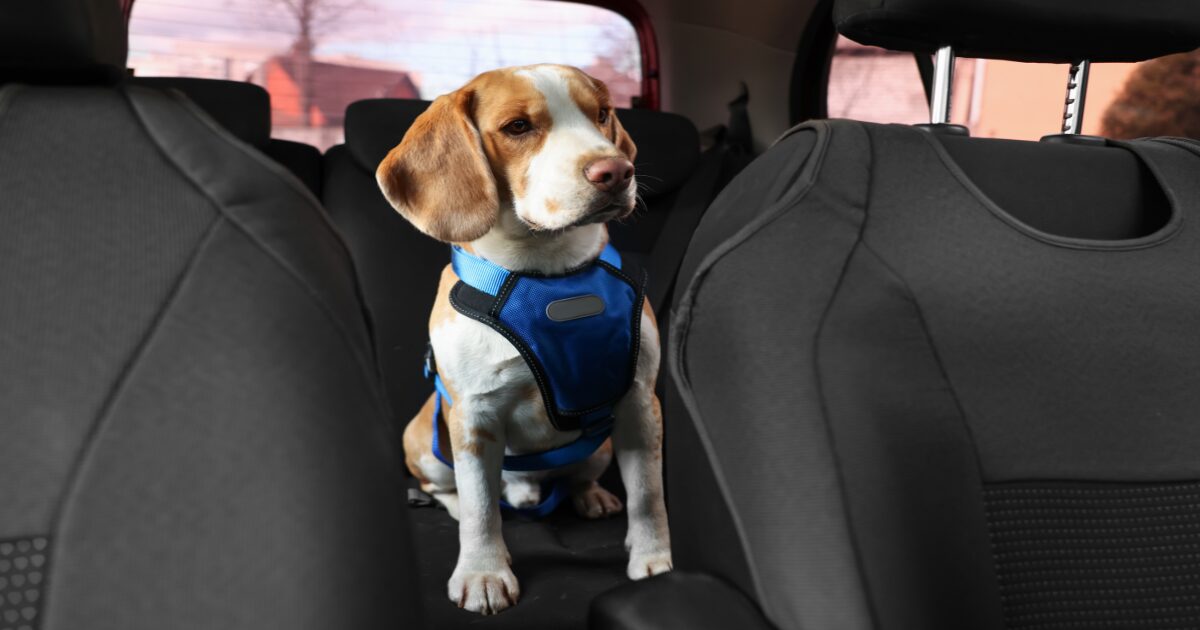
Essential Pet Travel Safety Tips for a Smooth and Safe Journey
Before hitting the road with your pet, there’s a crucial first step: preparation. Proper preparation not only ensures the safety of your pet but also makes the journey more enjoyable. This first step is about both mental and physical readiness for your pet.
Acclimating Your Pet to Travel
The first thing to check is whether your pet is comfortable with travel. If your pet is a first-time traveler, it’s essential to take them on short trips beforehand to help them adjust. Start with shorter drives around the neighborhood and progressively increase the length of the journey. This helps them get accustomed to the feeling of the car, and you can observe how they respond to the motion. This is particularly important for dogs and cats that are prone to motion sickness. For pets that tend to get anxious or sick in cars, consult with your vet for suggestions on how to help reduce these reactions.
Ensuring Your Pet’s Identification is Up-to-Date
Another important aspect of preparation is making sure your pet’s identification is up-to-date. Ensure that your pet’s collar has a visible ID tag with your phone number, and don’t forget about microchipping. Microchips are a reliable and permanent form of identification in case your pet gets lost. If your pet is already microchipped, verify that the details registered are correct. You should also consider GPS tracking devices for extra peace of mind while on the move, especially when stopping at unfamiliar places.
Health Checks Before You Hit the Road
Health checks are another non-negotiable preparation. Take your pet to the vet for a pre-trip check-up to ensure they’re fit for travel. It’s also a good opportunity to ensure that all vaccinations are up to date and discuss any concerns about travel, especially if your pet has health conditions. Some pets may need additional medication or supplements for a smooth journey, such as anti-nausea tablets, anti-anxiety medications, or pain relief.
How to Get Your Pet Ready for the Ultimate Road Trip: Pet Travel Safety Tips
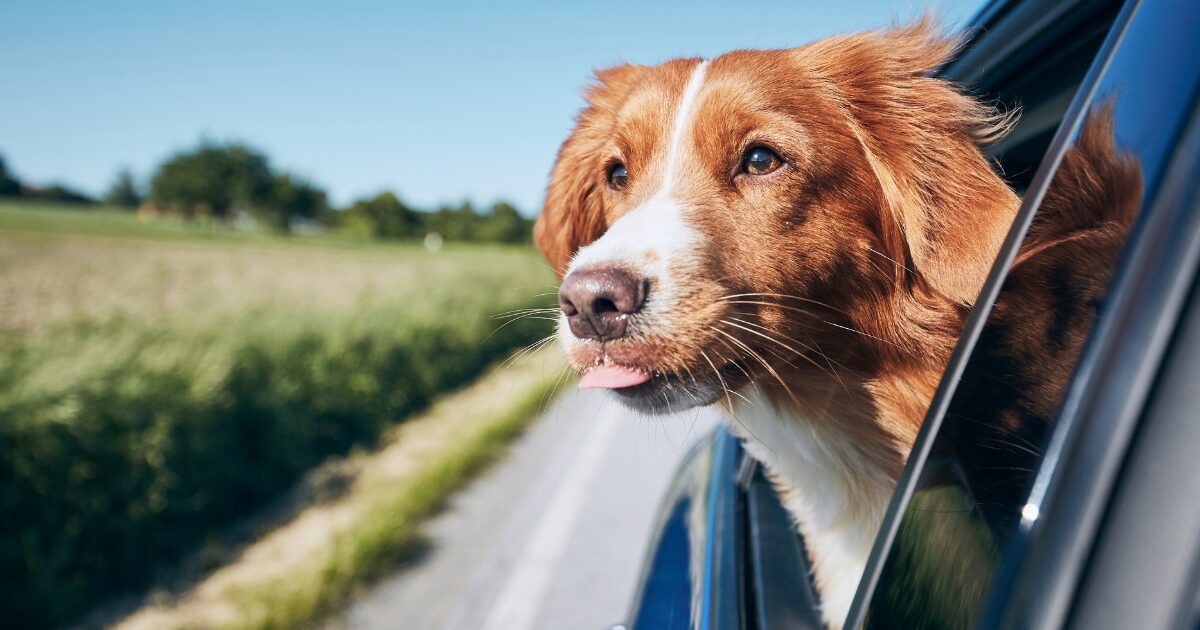
Getting your pet ready for a road trip isn’t just about packing their food and treats. You want to ensure that your pet feels at ease with the entire process—from the car ride to your destination. The more comfortable and prepared they are, the easier the journey will be for both of you.
Start by packing a dedicated bag for your pet with everything they’ll need. Essential items include food, treats, water, medications, grooming tools, and their favorite toys or blankets. Pets are creatures of habit, and having familiar items like their favorite blanket or toy can help reduce anxiety and provide a sense of comfort. A portable food and water bowl is essential, as it ensures your pet stays hydrated and well-fed during breaks.
Next, take the time to acclimate your pet to their travel setup. Whether you use a crate, seatbelt harness, or pet booster seat, make sure your pet is comfortable in it. If you haven’t used this specific gear before, give your pet time to get used to it before the trip. For example, if you plan to use a crate, let your pet spend time in it at home first, with the door open, so they can associate it with positive experiences.
It’s also crucial to schedule a vet visit before embarking on a long journey. This gives you an opportunity to check your pet’s overall health and address any concerns. The vet might recommend certain treatments or tips, such as flea and tick prevention, that are particularly useful when traveling through areas where these pests are prevalent. Additionally, the vet may suggest certain calming aids, whether natural remedies or prescribed medications, to help manage travel-related anxiety.
Choosing the Right Pet Travel Safety Gear for Your Road Trip Adventure
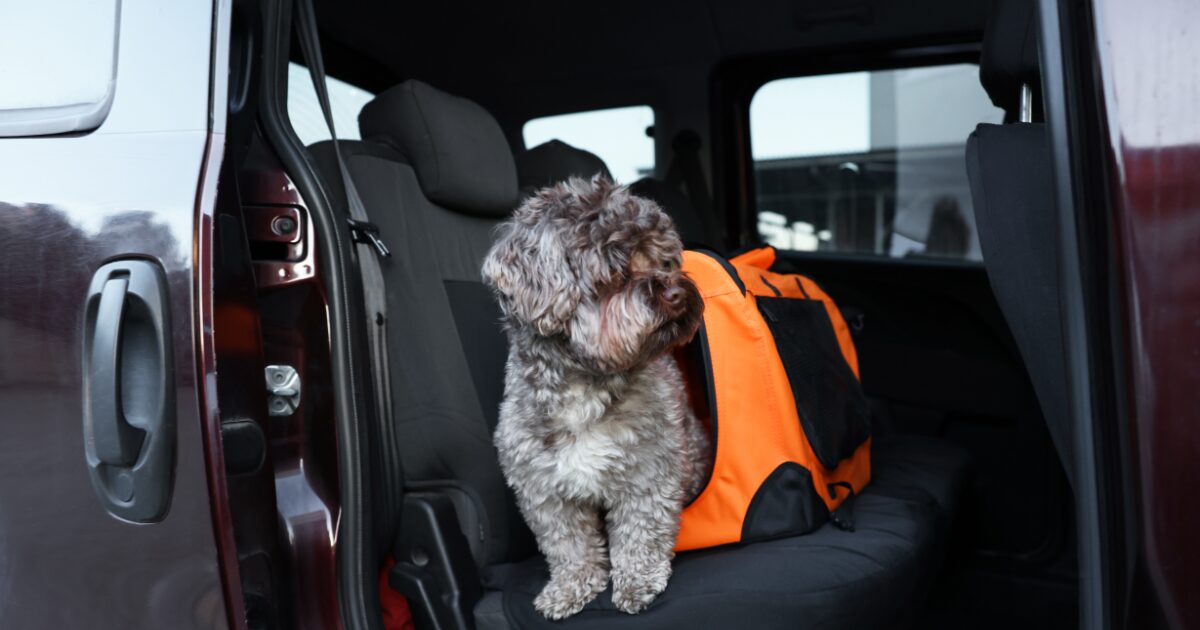
One of the best pet travel safety tips is ensuring you have the right gear for your pet’s safety and comfort. The right travel gear can make all the difference during a long car ride, and it’s essential to choose the gear that suits your pet’s size, breed, and temperament.
When it comes to crates or carriers, the key is choosing one that is large enough for your pet to stand, turn around, and lie down comfortably. A cramped or too-large crate can cause unnecessary stress or even injury in the event of a sudden stop or collision. Opt for a carrier that’s well-ventilated, secure, and easy to carry if needed. Crates made of hard plastic or metal tend to be safer during travel because they offer better protection than soft-sided crates.
For pets that don’t like being confined in a crate, consider using a pet seatbelt harness. These harnesses attach directly to your car’s seatbelt system and secure your pet in place, which prevents them from roaming around and causing distractions. Be sure to choose a harness that fits snugly without restricting movement. Some pet seatbelt harnesses come with extra padding for additional comfort during the ride. Additionally, check that the harness is crash-tested, so you can be sure it will keep your pet safe in case of an emergency.
If your pet is particularly small or likes to be closer to you, a pet booster seat is an excellent option. These seats allow your pet to sit comfortably, enjoy the view, and stay secure at the same time. Many booster seats have straps to keep your pet’s safety harness in place, ensuring they don’t get thrown around during the trip.
Pet Travel Safety Tips for Creating a Comfortable and Safe Car Environment
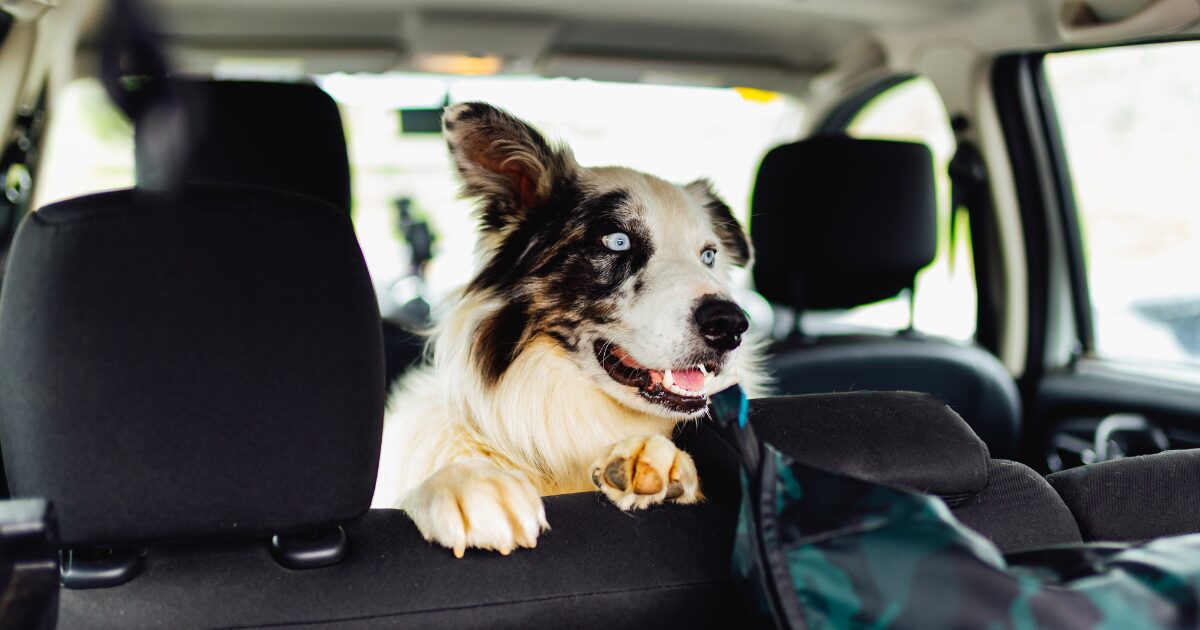
Creating a safe and comfortable environment in your car is essential for both your well-being and your pet’s comfort. A calm pet is a happy pet, and there are several ways you can enhance their travel experience.
First, make sure your car is well-ventilated. Pets, especially dogs, can overheat quickly, particularly in warm weather. Proper airflow through the car is essential to prevent heatstroke, so crack the windows and, if possible, use air conditioning to keep the temperature comfortable. Never leave your pet alone in a parked car, as even a few minutes can lead to dangerous heat levels, which can be fatal for pets.
You can also make the car environment more comfortable by bringing along items that remind your pet of home. Their favorite bed or blanket will provide a familiar scent and soft space to relax. It’s a good idea to place these items in their crate or seat, giving them a comfortable resting spot during the ride.
Another way to keep your pet calm is through soothing sounds. There are several pet travel safety tips related to anxiety, and playing calming music or using specialized pet relaxation tracks can help ease your pet’s nerves. Some pet owners even use pheromone sprays that help create a calming atmosphere in the car. These sprays mimic natural pheromones that pets associate with comfort and safety.
Must-Know Pet Travel Safety Tips for Avoiding Common Road Trip Hazards
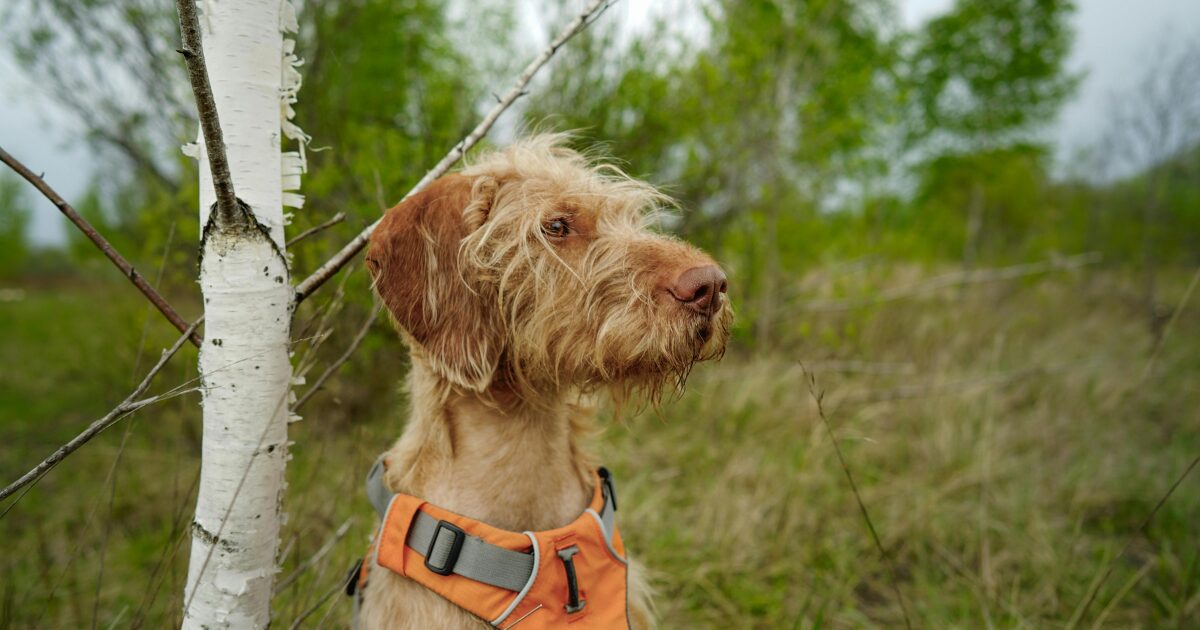
Road trips can present several hazards to your pet, so it’s vital to stay vigilant and prepared to avoid these risks. One of the top pet travel safety tips is to ensure that you’re aware of the potential dangers along the way and take steps to minimize them.
Heatstroke is one of the most significant dangers when traveling with pets. Never leave your pet alone in a vehicle, even for a brief moment. The inside of a car can reach dangerous temperatures within minutes, even with the windows cracked. If you’re traveling in hot weather, make sure your pet has plenty of fresh water and frequent breaks in the shade.
Another hazard is pet motion sickness, which can be triggered by long car rides. While not all pets suffer from motion sickness, it’s more common in puppies, kittens, and young animals. If you know your pet is prone to nausea, consult your vet before the trip. They may recommend over-the-counter or prescription anti-nausea medication to keep your pet comfortable during the journey. Additionally, make sure to avoid feeding your pet a large meal right before travel. Instead, feed them a light meal a couple of hours before departure to prevent discomfort.
One of the lesser-known hazards is the risk of distraction. While you might be focused on getting to your destination, pets can be a source of distraction. If your pet is roaming freely in the car, they may try to climb into the front seat, nudge you while you’re driving, or even get in the way of the gear shift. Pet travel safety tips emphasize keeping your pet securely in their designated spot to avoid these potential distractions.
How to Keep Your Pet Hydrated and Healthy on Long Drives: Pet Travel Safety Tips
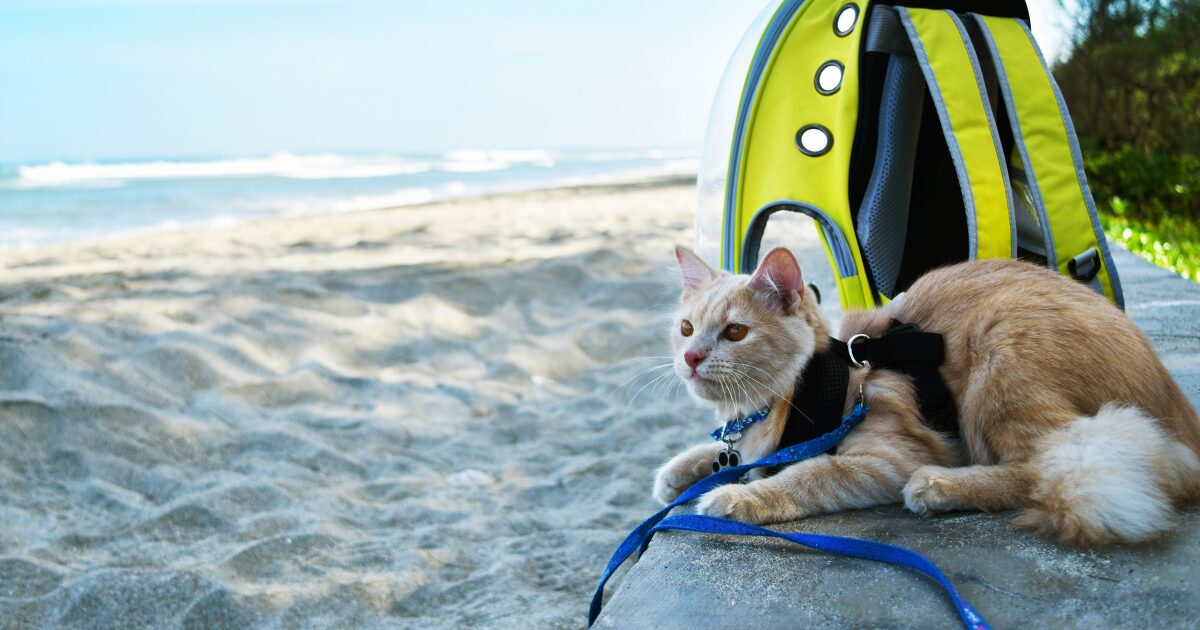
Hydration and proper nutrition are essential during long road trips. Just like you, your pet needs plenty of water and food to stay healthy on the road. The importance of keeping your pet hydrated cannot be stressed enough, especially on long trips when they may not have easy access to water.
Bring plenty of water with you, and don’t forget a spill-proof water bowl. Frequent stops are necessary to let your pet stretch their legs, and during these breaks, offer them water to keep them hydrated. If your pet tends to get car sick, offer water more frequently in small amounts to avoid upsetting their stomach.
As for food, bring along your pet’s usual diet to prevent digestive issues. It’s always best to keep their meal routine consistent, even while traveling. If you’re traveling through different time zones or changing schedules, try to keep feeding times consistent to avoid any unnecessary stress. Avoid feeding your pet a heavy meal just before you leave. Instead, opt for a light meal a few hours before the trip to prevent nausea and indigestion.
Pet Travel Safety Tips for Protecting Your Pet During Stops and Breaks
When it’s time for a break, make sure to protect your pet from potential dangers. Rest stops are great for giving your pet a chance to stretch their legs, but they can also be hazardous if you’re not careful.
Always keep your pet on a leash when letting them out of the car. Even if your pet is typically well-behaved, unfamiliar environments can make them nervous or excited, causing them to bolt unexpectedly. Be mindful of other animals around, especially aggressive dogs, which could pose a threat to your pet. Keep a close eye on your pet and make sure they’re in a safe, enclosed area during stops.
During breaks, always provide your pet with fresh water and make sure they are protected from the sun. If you’re traveling during hot weather, avoid long stops where your pet could be exposed to heat. Opt for shady areas, and never leave your pet alone in the car under any circumstances.
Crucial Pet Travel Safety Tips for Managing Pet Anxiety During the Journey
For pets that experience anxiety during travel, the journey can be stressful. Managing this anxiety is one of the most critical aspects of pet travel safety. There are several ways to help ease your pet’s nerves during the trip.
Start by keeping your pet’s environment as familiar as possible. Bringing along items with their scent, such as their blanket or a favorite toy, can help reduce anxiety. If your pet is
particularly nervous, consider using calming supplements or sprays recommended by your vet. Natural remedies like lavender or chamomile can also have a soothing effect on some pets.
For severe anxiety, talk to your vet about medication options that can help your pet stay calm during travel. Many pets benefit from prescription anti-anxiety medications or calming wraps, which apply gentle pressure to help reduce stress.
Pet Travel Safety Tips for Pet-Proofing Your Vehicle for a Stress-Free Ride
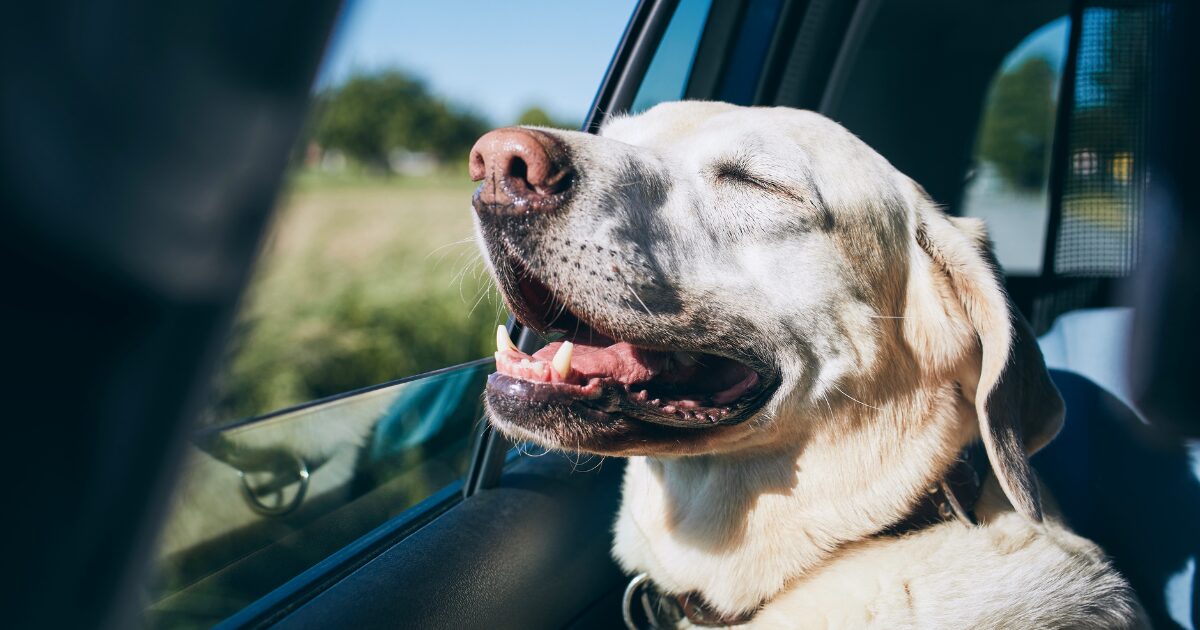
When you embark on a road trip with your furry friend, the safety and comfort of your pet should be a priority from the moment you start the car until you reach your destination. A big part of this responsibility involves pet-proofing your vehicle to ensure your pet’s well-being during the ride. By taking a few simple steps to secure your vehicle, you can create a safe, stress-free environment that helps keep both you and your pet comfortable and secure.
Create a Dedicated Space for Your Pet
First and foremost, it’s crucial to create a dedicated space for your pet. This minimizes distractions while driving and prevents your pet from roaming around the vehicle, which could be dangerous in the event of sudden stops or a collision. Depending on the size of your pet and your vehicle, there are various options to help contain them safely. If you’re traveling with a dog or cat that’s small enough, a pet carrier or crate is an excellent choice. For larger pets, consider investing in a pet seat belt harness or a pet car booster seat. These options secure your pet in place, reducing the risk of injury during the trip.
When selecting a crate or carrier, ensure that it’s large enough for your pet to stand up, turn around, and lie down comfortably. Overcrowded carriers can cause unnecessary stress for your pet, making the trip more uncomfortable for both of you. On the other hand, a crate that’s too big may allow your pet to slide around during sudden stops or sharp turns, potentially injuring them. A snug fit is key. The carrier should also be well-ventilated to ensure your pet has enough airflow, and it should be securely fastened to prevent any movement during the drive.
Seat Belt Harnesses: A Great Option for Non-Crate Travelers
For pets that prefer not to be confined in a crate, a pet seatbelt harness is an excellent option for safety. These harnesses attach to your car’s seatbelt system, effectively keeping your pet secure in place without restricting their movement too much. It’s important to choose a harness that is crash-tested for safety. These harnesses should fit snugly but comfortably, offering enough room for your pet to sit, stand, or lay down without strain. Keep in mind that a well-fitted harness helps prevent any dangerous distractions while driving, such as your pet jumping onto your lap or getting in the way of the gearshift.
Comfort is Key: Providing a Cozy Spot for Your Pet
While the focus is on safety, comfort should never be overlooked. Regardless of whether your pet is in a crate or a seatbelt harness, make sure they have a comfortable spot to rest during the journey. For crates, lining the bottom with a soft, absorbent bed or blanket will provide your pet with a familiar, cozy spot to relax. If your pet is in a seatbelt harness, you can still make them comfortable by providing a soft cushion or travel blanket for added comfort. Many pets are sensitive to the temperature of the car, so a light blanket or cooling pad can help regulate their body temperature, especially in hot or cold weather.
Protect Your Car with Pet-Specific Seat Covers and Liners
To protect your car from dirt, hair, and damage caused by your pet’s movements, investing in seat covers or car liners is a smart move. Seat covers specifically designed for pets come in different styles, such as hammock-style covers that protect the back of the front seats, or traditional covers that shield your seats from scratches, spills, and pet hair. These covers not only make your vehicle more comfortable for your pet but also make cleanup after the trip much easier. You can easily remove the covers and shake out any dirt or vacuum the hair away, ensuring that your car stays clean and fresh.
Secure Loose Items in the Vehicle
Another way to pet-proof your vehicle is to secure any loose items in the car that could pose a risk during travel. Things like bags, tools, or even water bottles can become projectiles in the event of a sudden stop or accident. Always make sure that these items are either securely stored or removed from the vehicle before you start your journey. This also includes securing any electronic devices or items your pet may be curious about, which could distract them or cause them to get hurt.
Check for Gaps and Hazards in Your Vehicle
Also, check your vehicle for any gaps or hazards where your pet might accidentally get hurt or stuck. For instance, check the door handles to ensure your pet can’t accidentally paw them open, or check under the seats to ensure nothing sharp or dangerous is in the way. If your pet is prone to jumping around, consider installing a pet barrier that blocks access to certain parts of the vehicle, such as the front seats. This barrier provides a physical separation between the driver’s area and your pet’s area, ensuring a safer journey.
Keep the Vehicle Clean and Safe for Travel
Lastly, the overall cleanliness of your vehicle can affect your pet’s comfort and safety. For example, keep the windows clean and free of grime that may obstruct visibility, and make sure the floors are clean and slip-free. Adding non-slip mats in the areas where your pet will be traveling can help prevent them from slipping during the ride, especially during turns or stops. Keeping the area free from clutter and ensuring everything is safely secured will help minimize distractions and provide a smooth, safe ride for both you and your pet.
Post-Trip Pet Travel Safety Tips for Ensuring Your Pet’s Recovery After the Adventure
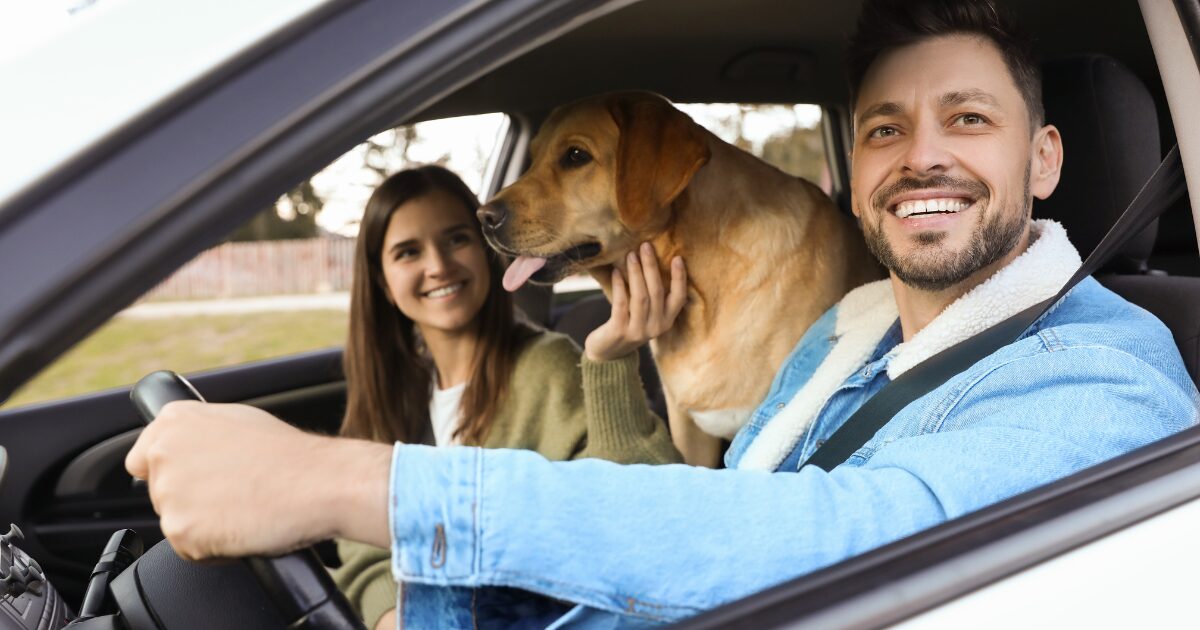
After an exciting road trip or adventure, your pet might need some time to recover and recharge. Traveling, especially for extended periods or over long distances, can be a physically and mentally taxing experience for your furry friend. Whether it’s dealing with the stresses of being in a moving vehicle, adjusting to unfamiliar environments, or the physical exertion of outdoor activities, pets can sometimes feel exhausted after the journey. To help your pet recover and ensure they feel safe, healthy, and comfortable once you’re back home, it’s important to take a few post-trip steps.
Check for Physical Injuries or Discomfort
Once you’ve reached your destination, it’s essential to inspect your pet for any signs of physical discomfort or injuries that may have occurred during the trip. For instance, check their paws for any cuts, blisters, or burns, especially if you’ve taken them on walks or hikes during rest stops. Walking on rough or hot surfaces like pavement can cause burns to your pet’s paws, so be mindful of this when taking breaks. If you notice any signs of redness, swelling, or limping, it’s best to consult your veterinarian to ensure your pet’s paws are healthy and free from injury.
Additionally, examine your pet’s body for any unusual bumps, bruises, or sore spots that may have developed during the ride. If they were confined to a crate or carrier for long periods, they might experience muscle stiffness or discomfort. Gently massage your pet’s body to help them relax and relieve any tension that may have built up during the journey.
Monitor Your Pet’s Behavior and Mood
After the trip, it’s important to monitor your pet’s behavior closely to ensure they’re not suffering from stress or anxiety. Just like humans, pets can experience emotional exhaustion after a long journey. They may be more tired than usual, anxious, or exhibit signs of irritability. If your pet seems unusually quiet or withdrawn, it’s crucial to allow them plenty of time to rest and recover in a familiar and calm environment. Keep the noise levels low and avoid overwhelming them with too much stimulation as they unwind.
In some cases, pets might experience a delay in adjusting back to their usual routines after a trip. They might be hesitant to eat or drink right away, or they may seem off in terms of their energy levels. This could be due to the stress of travel or just the need for a break. Give your pet time and space, but don’t hesitate to contact your veterinarian if the symptoms persist for more than a day or two.
Hydration and Nutrition: Let Your Pet Rest and Recover
After a long journey, staying hydrated and nourished is key to your pet’s recovery. Make sure to offer them fresh water immediately after the trip. Traveling can sometimes lead to dehydration, especially if your pet didn’t drink as much water during the ride due to anxiety or discomfort. Encourage your pet to drink by offering water regularly, and consider providing them with their usual meals at their regular feeding times.
When it comes to feeding, keep in mind that your pet may not be as hungry right away due to travel fatigue. Allow them to eat at their own pace, and consider offering smaller, more frequent meals to help them ease back into their regular eating schedule. Avoid giving your pet large meals right after travel, as this could lead to digestive issues or discomfort. Instead, opt for easily digestible foods, such as boiled chicken and rice, or a light portion of their usual food to help settle their stomachs.
If your pet has special dietary needs or is on medication, be sure to stick to their prescribed routine and consult your vet about any necessary adjustments.
Let Your Pet Relax in a Familiar, Comfortable Environment
One of the most important things you can do for your pet after a trip is to ensure they have a comfortable and familiar space where they can relax and rest. If your pet has been staying in new or unfamiliar places during the trip, they will likely appreciate the opportunity to return to their home or a familiar environment. This will help them feel more secure and reduce any lingering anxiety from the trip.
Set up a cozy area where your pet can rest uninterrupted, whether it’s their bed, favorite blanket, or a quiet room. Make sure that their area is free from distractions and provide them with toys, treats, and anything else that might help them feel at ease. Giving your pet a peaceful environment where they can recharge is one of the best ways to ensure they bounce back from their travels quickly and stress-free.
Keep an Eye Out for Post-Trip Illness Symptoms
While it’s not uncommon for pets to feel a little off after a long journey, it’s important to be vigilant for any signs of illness or injury that might have developed during the trip. Keep an eye out for any changes in your pet’s appetite, energy level, or behavior. If your pet seems unusually lethargic, refuses to eat or drink, or experiences diarrhea, vomiting, or other signs of illness, consult your veterinarian as soon as possible.
Sometimes pets can pick up parasites, bacteria, or infections during their travels, especially if they were in areas with other animals or in unfamiliar environments. Symptoms like a cough, fever, excessive licking, or changes in bathroom habits should be addressed promptly to ensure your pet is healthy and comfortable after the adventure.
Schedule a Post-Trip Vet Check-Up if Necessary
If your pet has had a long or strenuous trip, or if they’ve experienced any unusual symptoms after the journey, it may be a good idea to schedule a post-trip check-up with your veterinarian. Your vet can check for any underlying health concerns that may have arisen during the trip, such as dehydration, stress-related issues, or minor injuries that may not have been immediately apparent.
A vet visit also gives you an opportunity to review any travel-related concerns, such as vaccinations or parasite prevention, and to ensure your pet is up-to-date on their health needs. Preventative care is always the best option, and your vet can provide valuable advice on how to keep your pet healthy and happy during future travels.
Conclusion
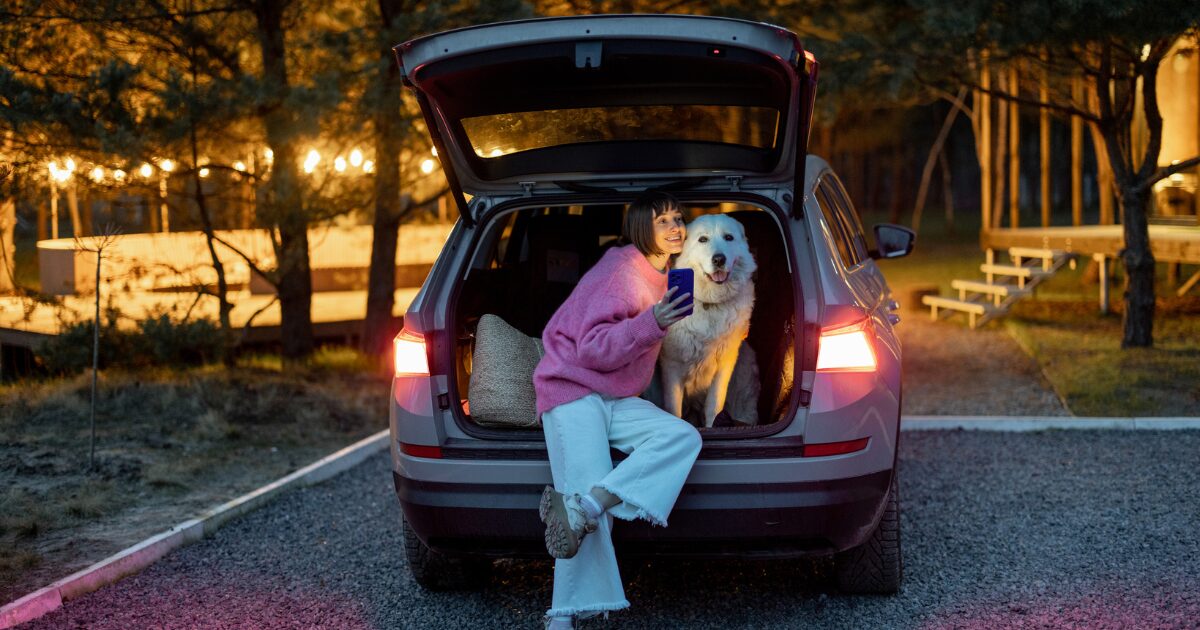
Traveling with your pet can be one of the most rewarding experiences for both you and your furry friend, but it requires careful planning and attention to detail to ensure their safety and well-being every step of the way. From pet-proofing your vehicle to managing their hydration and comfort during the journey, and finally helping them recover post-trip, each stage is essential in creating a positive and stress-free travel experience.
By following the pet travel safety tips outlined throughout this article, you can minimize risks, prevent accidents, and provide your pet with the love, care, and attention they need for a happy, healthy adventure. Whether you’re a seasoned traveler or embarking on your first road trip with your pet, these tips will help make every journey safer and more enjoyable for everyone involved.
Remember, the key to a successful trip is preparation, comfort, and vigilance. With a little extra care, your pet can enjoy traveling just as much as you do. So, pack up your bags, secure your pet, and get ready for unforgettable adventures together! Safe travels!
For more information, visit The Paws Hub.